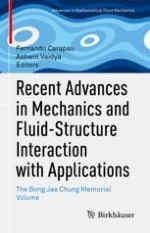This volume examines current research in mechanics and its applications to various disciplines, with a particular focus on fluid-structure interaction (FSI). The topics have been chosen in commemoration of Dr. Bong Jae Chung and with respect to his wide range of research interests. This volume stands apart because of this diversity of interests, featuring an interdisciplinary and in-depth analysis of FSI that is difficult to find conveniently collected elsewhere in the literature. Contributors include mathematicians, physicists, mechanical and biomechanical engineers, and psychologists. This volume is structured into four thematic areas in order to increase its accessibility: theory, computations, experiments, and applications. Recent Advances in Mechanics and Fluid-Structure Interaction with Applications will appeal to established researchers as well as postdocs and graduate students interested in this active area of research.
